Abstract
To understand how environmental factors contribute to fertility or infertility in humans, it is first necessary to define environment. A view that will guide this review is that environment represents the "external milieu," analogous to the well-defined concept of "internal milieu" first introduced by Claude Bernard. Within this context, the environment provides both positive and adverse influences on reproductive health and development. Environmental factors can then be classified into categories such as physical, chemical, biological, behavioral, and socioeconomic. In many circumstances, multiple environmental factors may contribute to adversely modify human health. It has been suspected and in some cases demonstrated that stress can adversely affect reproductive function. Both animal and human data support this contention; however, the human data are clear in extreme situations (e.g., inmates of concentration camps) but less so under less drastic conditions. In recent years many advances have been made concerning the neurochemical mechanisms that mediate the effects of stress on reproductive functions and on the identification of "stress hormones" that may not only be involved in the stress response but also serve as biochemical markers to identify and correlate stress with different fertility parameters. Nutrition also plays an important role in infertility, and undernutrition or nutrition disorders are associated with stress in infertility. Environmental factors are often invoked as contributing to many cases of unexplained infertility. However, the direct causal relationship between those factors and the ensuing infertility of the couple are seldom well established and remain largely anecdotal.(ABSTRACT TRUNCATED AT 250 WORDS)
Full text
PDF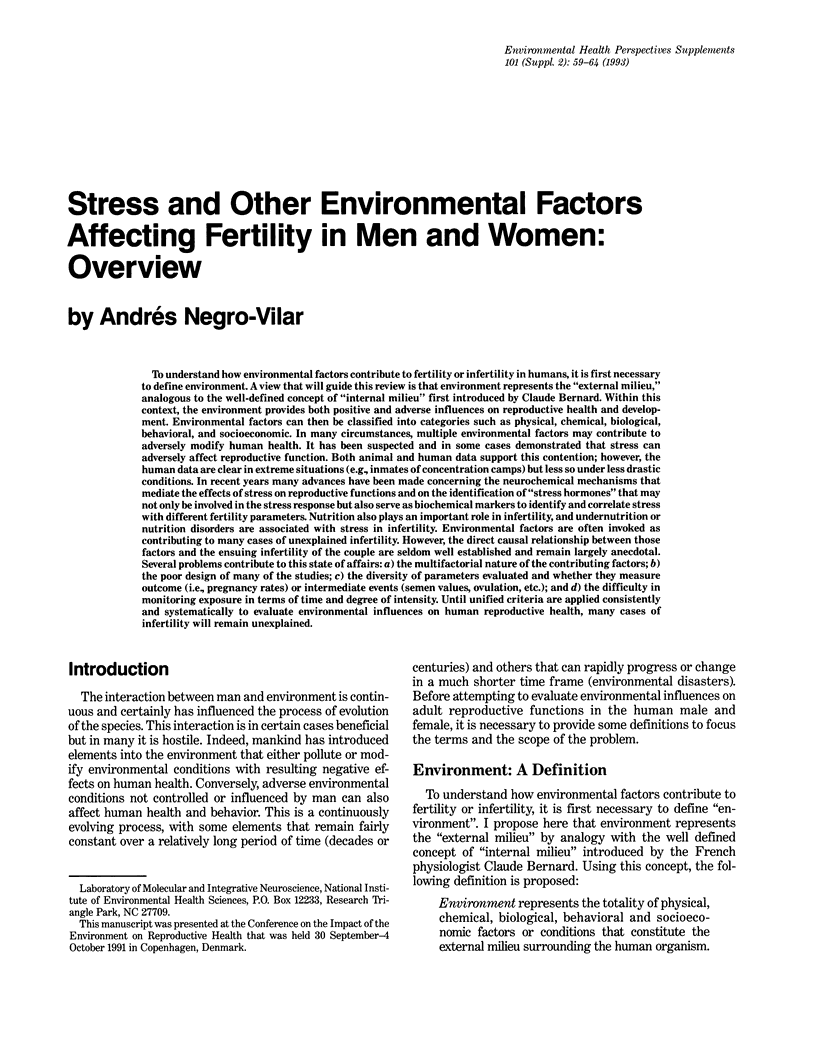
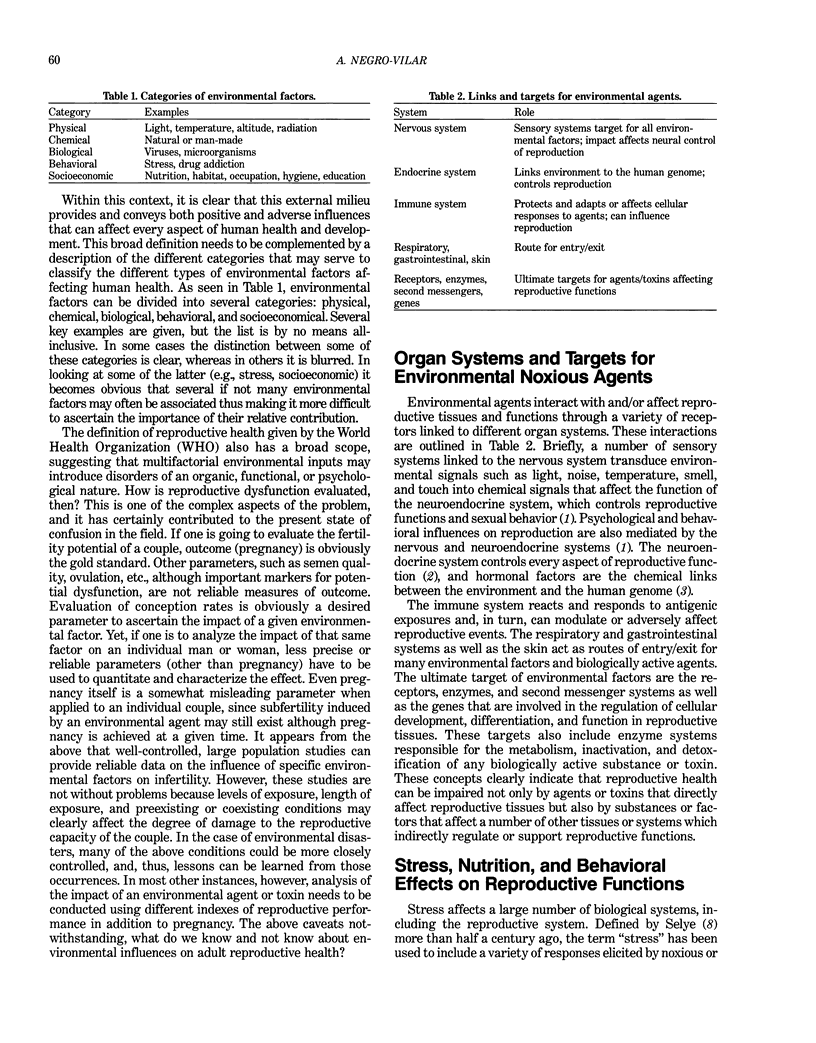
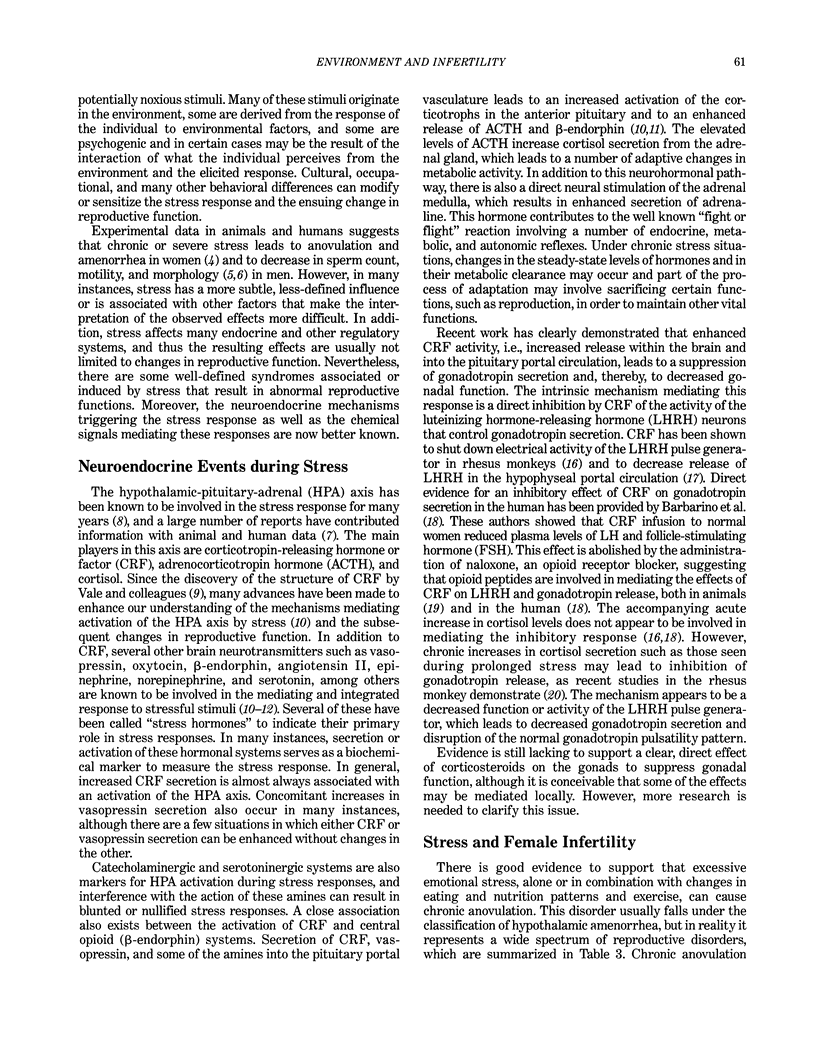
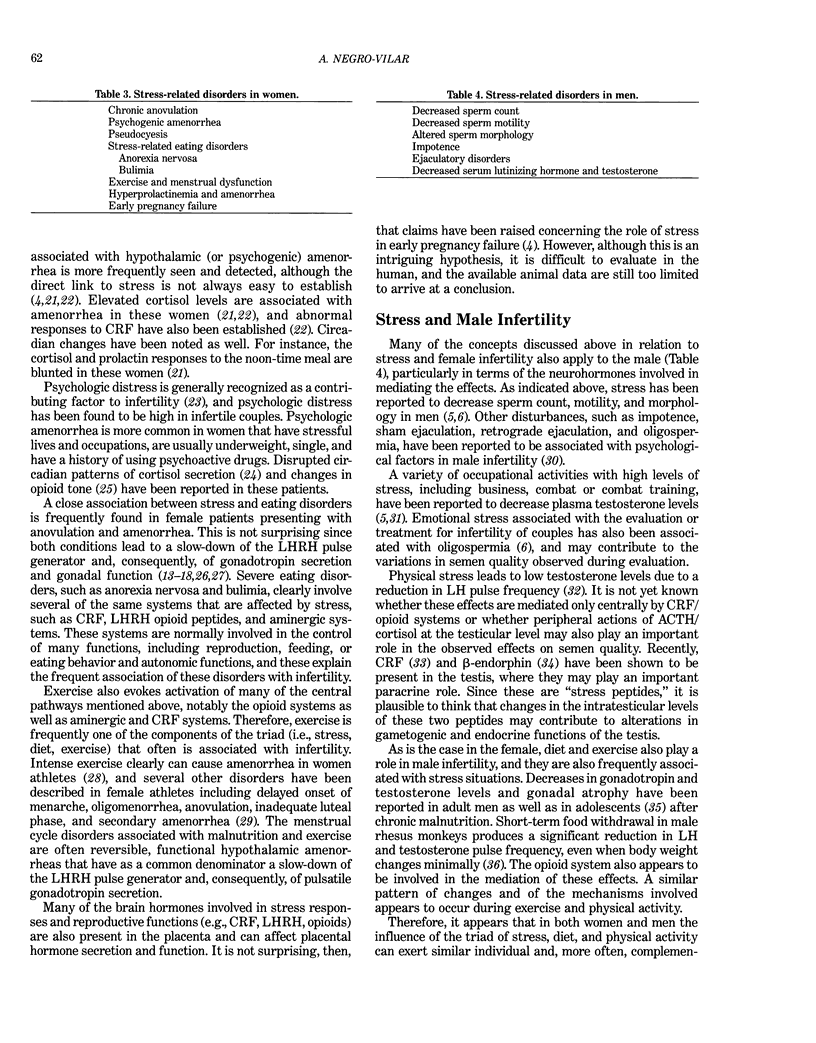
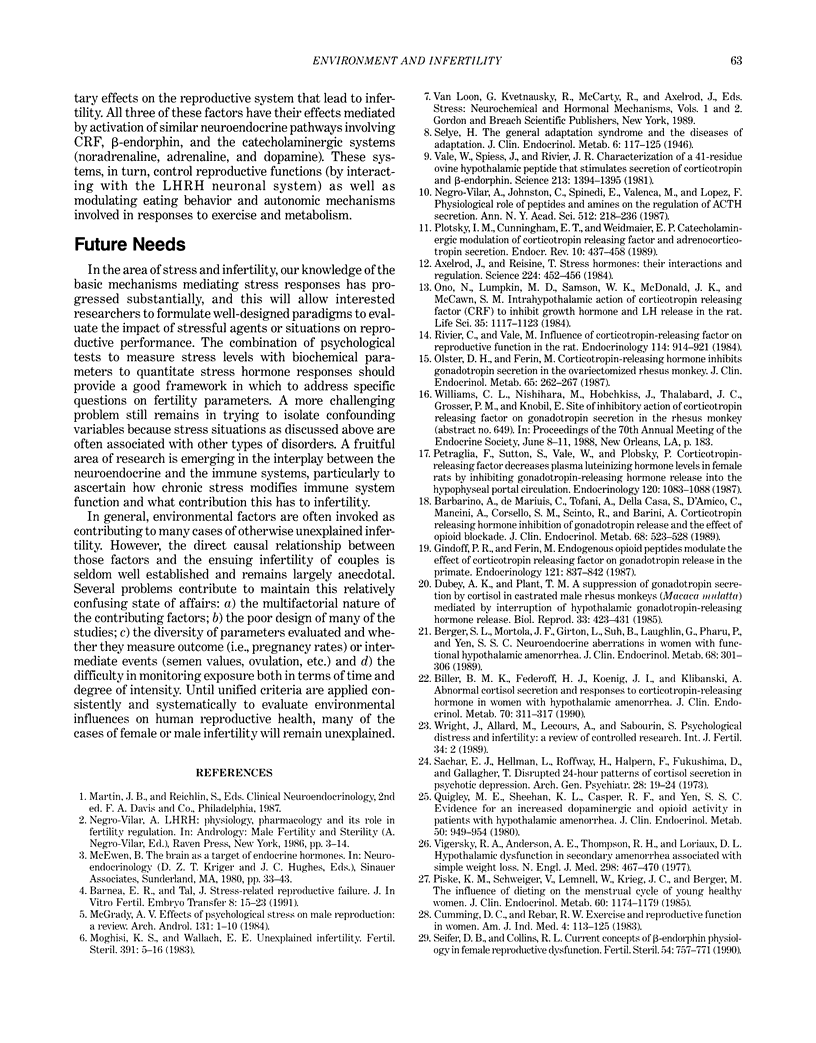
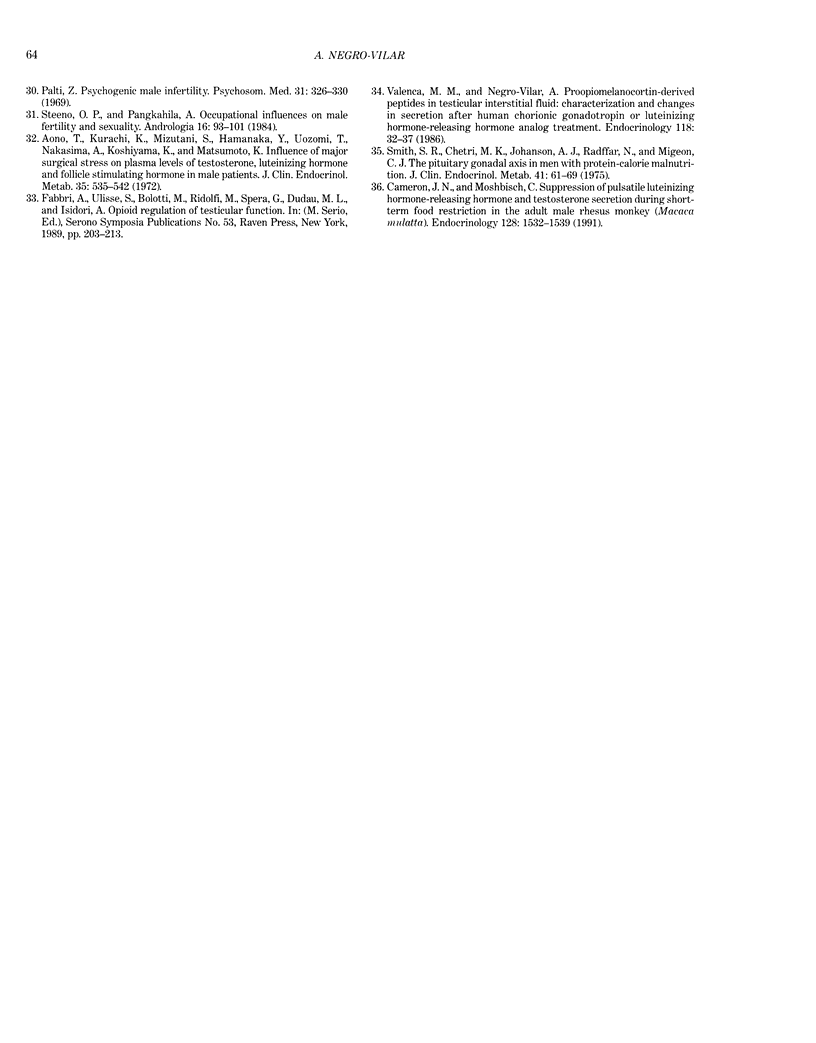
Selected References
These references are in PubMed. This may not be the complete list of references from this article.
- Aono T., Kurachi K., Mizutani S., Hamanaka Y., Uozumi T., Nakasima A., Koshiyama K., Matsumoto K. Influence of major surgical stress on plasma levels of testosterone, luteinizing hormone and follicle-stimulating hormone in male patients. J Clin Endocrinol Metab. 1972 Oct;35(4):535–542. doi: 10.1210/jcem-35-4-535. [DOI] [PubMed] [Google Scholar]
- Axelrod J., Reisine T. D. Stress hormones: their interaction and regulation. Science. 1984 May 4;224(4648):452–459. doi: 10.1126/science.6143403. [DOI] [PubMed] [Google Scholar]
- Barbarino A., De Marinis L., Tofani A., Della Casa S., D'Amico C., Mancini A., Corsello S. M., Sciuto R., Barini A. Corticotropin-releasing hormone inhibition of gonadotropin release and the effect of opioid blockade. J Clin Endocrinol Metab. 1989 Mar;68(3):523–528. doi: 10.1210/jcem-68-3-523. [DOI] [PubMed] [Google Scholar]
- Barnea E. R., Tal J. Stress-related reproductive failure. J In Vitro Fert Embryo Transf. 1991 Feb;8(1):15–23. doi: 10.1007/BF01131586. [DOI] [PubMed] [Google Scholar]
- Biller B. M., Federoff H. J., Koenig J. I., Klibanski A. Abnormal cortisol secretion and responses to corticotropin-releasing hormone in women with hypothalamic amenorrhea. J Clin Endocrinol Metab. 1990 Feb;70(2):311–317. doi: 10.1210/jcem-70-2-311. [DOI] [PubMed] [Google Scholar]
- Cameron J. L., Nosbisch C. Suppression of pulsatile luteinizing hormone and testosterone secretion during short term food restriction in the adult male rhesus monkey (Macaca mulatta). Endocrinology. 1991 Mar;128(3):1532–1540. doi: 10.1210/endo-128-3-1532. [DOI] [PubMed] [Google Scholar]
- Cumming D. C., Rebar R. W. Exercise and reproductive function in women. Am J Ind Med. 1983;4(1-2):113–125. [PubMed] [Google Scholar]
- Dubey A. K., Plant T. M. A suppression of gonadotropin secretion by cortisol in castrated male rhesus monkeys (Macaca mulatta) mediated by the interruption of hypothalamic gonadotropin-releasing hormone release. Biol Reprod. 1985 Sep;33(2):423–431. doi: 10.1095/biolreprod33.2.423. [DOI] [PubMed] [Google Scholar]
- Gindoff P. R., Ferin M. Endogenous opioid peptides modulate the effect of corticotropin-releasing factor on gonadotropin release in the primate. Endocrinology. 1987 Sep;121(3):837–842. doi: 10.1210/endo-121-3-837. [DOI] [PubMed] [Google Scholar]
- McGrady A. V. Effects of psychological stress on male reproduction: a review. Arch Androl. 1984;13(1):1–7. doi: 10.3109/01485018408987495. [DOI] [PubMed] [Google Scholar]
- Negro-Vilar A., Johnston C., Spinedi E., Valença M., Lopez F. Physiological role of peptides and amines on the regulation of ACTH secretion. Ann N Y Acad Sci. 1987;512:218–236. doi: 10.1111/j.1749-6632.1987.tb24963.x. [DOI] [PubMed] [Google Scholar]
- Olster D. H., Ferin M. Corticotropin-releasing hormone inhibits gonadotropin secretion in the ovariectomized rhesus monkey. J Clin Endocrinol Metab. 1987 Aug;65(2):262–267. doi: 10.1210/jcem-65-2-262. [DOI] [PubMed] [Google Scholar]
- Ono N., Lumpkin M. D., Samson W. K., McDonald J. K., McCann S. M. Intrahypothalamic action of corticotrophin-releasing factor (CRF) to inhibit growth hormone and LH release in the rat. Life Sci. 1984 Sep 3;35(10):1117–1123. doi: 10.1016/0024-3205(84)90077-8. [DOI] [PubMed] [Google Scholar]
- Palti Z. Psychogenic male infertility. Psychosom Med. 1969 Jul-Aug;31(4):326–330. doi: 10.1097/00006842-196907000-00005. [DOI] [PubMed] [Google Scholar]
- Petraglia F., Sutton S., Vale W., Plotsky P. Corticotropin-releasing factor decreases plasma luteinizing hormone levels in female rats by inhibiting gonadotropin-releasing hormone release into hypophysial-portal circulation. Endocrinology. 1987 Mar;120(3):1083–1088. doi: 10.1210/endo-120-3-1083. [DOI] [PubMed] [Google Scholar]
- Pirke K. M., Schweiger U., Lemmel W., Krieg J. C., Berger M. The influence of dieting on the menstrual cycle of healthy young women. J Clin Endocrinol Metab. 1985 Jun;60(6):1174–1179. doi: 10.1210/jcem-60-6-1174. [DOI] [PubMed] [Google Scholar]
- Plotsky P. M., Cunningham E. T., Jr, Widmaier E. P. Catecholaminergic modulation of corticotropin-releasing factor and adrenocorticotropin secretion. Endocr Rev. 1989 Nov;10(4):437–458. doi: 10.1210/edrv-10-4-437. [DOI] [PubMed] [Google Scholar]
- Quigley M. E., Sheehan K. L., Casper R. F., Yen S. S. Evidence for increased dopaminergic and opioid activity in patients with hypothalamic hypogonadotropic amenorrhea. J Clin Endocrinol Metab. 1980 May;50(5):949–954. doi: 10.1210/jcem-50-5-949. [DOI] [PubMed] [Google Scholar]
- Rivier C., Vale W. Influence of corticotropin-releasing factor on reproductive functions in the rat. Endocrinology. 1984 Mar;114(3):914–921. doi: 10.1210/endo-114-3-914. [DOI] [PubMed] [Google Scholar]
- Sachar E. J., Hellman L., Roffwarg H. P., Halpern F. S., Fukushima D. K., Gallagher T. F. Disrupted 24-hour patterns of cortisol secretion in psychotic depression. Arch Gen Psychiatry. 1973 Jan;28(1):19–24. doi: 10.1001/archpsyc.1973.01750310011002. [DOI] [PubMed] [Google Scholar]
- Seifer D. B., Collins R. L. Current concepts of beta-endorphin physiology in female reproductive dysfunction. Fertil Steril. 1990 Nov;54(5):757–771. doi: 10.1016/s0015-0282(16)53928-4. [DOI] [PubMed] [Google Scholar]
- Steeno O. P., Pangkahila A. Occupational influences on male fertility and sexuality. Andrologia. 1984 Mar-Apr;16(2):93–101. doi: 10.1111/j.1439-0272.1984.tb00242.x. [DOI] [PubMed] [Google Scholar]
- Vale W., Spiess J., Rivier C., Rivier J. Characterization of a 41-residue ovine hypothalamic peptide that stimulates secretion of corticotropin and beta-endorphin. Science. 1981 Sep 18;213(4514):1394–1397. doi: 10.1126/science.6267699. [DOI] [PubMed] [Google Scholar]
- Valenca M. M., Negro-Vilar A. Proopiomelanocortin-derived peptides in testicular interstitial fluid: characterization and changes in secretion after human chorionic gonadotropin or luteinizing hormone-releasing hormone analog treatment. Endocrinology. 1986 Jan;118(1):32–37. doi: 10.1210/endo-118-1-32. [DOI] [PubMed] [Google Scholar]


